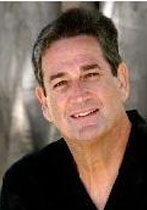
SAN DIEGO — This weekend, while most Americans are continuing to shake their heads over the terminally drooping economy, the decidedly uninspiring race for the Republican presidential nomination, and the hard-to-discern frenzy about the Eurozone, something is happening in Memphis, Tennessee, that is worthy of our attention.
The National Civil Rights Museum, a historic site housed within and around the remaining structure of the Lorraine Motel, will be celebrating its 20th anniversary. Its very existence was as unlikely a possibility a generation ago as the reality of an African American president now gearing up for reelection. The odds of the Museum ever taking on bricks and mortar and offering a full array of exhibits, programs, and seminars were almost as hard as the chances for a black person to take the oath of office.
Most white Memphians wanted to see the place bulldozed. The black leadership who sought to save it fought more with each other about turf and leverage than for the project itself. The vast majority of the money that came through to resurrect the tragic site came quietly from white coffers, particularly from J.R. “Pitt” Hyde, a local magnate who just thought that Memphis could only heal with a proper cultural center at the site of the MLK murder.
The Lorraine Motel, at Mulberry and Main near downtown, originally a seedy brothel for whites, ultimately a well-run, segregated lodge for blacks only, was a favored stop-over for Rev. Martin Luther King, Jr. during his brief years as the leader of the civil rights movement. He was assassinated outside his preferred Room 306 at 6:01 PM on Thursday, April 4, 1968. He had been standing on the balcony—now a wreathed, national shrine—preparing to go to dinner at the home of his local friend and colleague, Rev. Samuel “Billy’ Kyles. Kyles, now 77, and a kind of living exhibit in and around the Museum, is the last surviving actual witness to the shooting.
King was in Memphis, against the counsel of his closest advisers, trying to help and encourage a wildcat strike of local sanitation workers, overwhelming black, desperately underpaid, denied any benefits and even the right to retreat to segregated shelters during Memphis’s regular rains or heat waves. As Billy Kyles likes to point out, King did not die leaving the scene of an accident, or from a drug overdose, or in the arms of a lover. He died while trying to help some garbage men.
The Lorraine Motel, one of the only places where black people could even lodge in the city, nondescript, unattractive, with mustard-yellow and blue walls, railings, and a second-story balcony, was a cinder-block inn set in a district of flophouses, pimps, and undercover police lookout posts.
And yet, some of the greatest artisans in American history stayed there while making music just around the corner on Beale Street—along with immortal Negro League baseball players, basketball’s illustrious Harlem Globetrotters, and, of course the grand preachers of the Gospel, the grandest being Martin Luther King, Jr.
Room 306 is now the faultlessly preserved (unmade twin beds of King and his immediate aide, Rev. Ralph Abernathy, half-filled ashtrays, black rotary phone, television with rabbit-ears antenna) centerpiece of the National Civil Rights Museum. The Lorraine Motel, which barely escaped foreclosure in the years after the assassination, is now something akin to a national memorial.
Retired Memphis circuit court Judge D’Army Bailey, a self-described “black radical,” was so transfixed by the specter of the bloodied balcony outside Room 306 that he worked with Shelby County philanthropists to help save the Lorraine from foreclosure and eventually convert it into the National Civil Rights Museum in 1991. He was then summarily dumped as its chairman. Bailey recalls the parade of Stax musicians and gospel singers who stayed at the Holiday Inn-style motel—ranging from Count Basie to Ray Charles to Aretha Franklin to Cab Calloway and Sarah Vaughn.
The epoch of the transformation of the old motel into the museum now visited by tourists, U2, Nelson Mandela, the Dalai Lama, and Oprah Winfrey is not an easy one. Most people in Memphis were disinterested at best and hostile at worst. A lot of the folks involved genuinely disliked one another—and not just along racial lines. Bailey’s very pushiness and tendency to posture made it happen and set up his dismissal as the first board chairman. But it got done.
Eighteen hundred people are in Memphis for the celebration, with red carpet, champagne, and well-deserved congratulations. The wreath outside Room 306 bends silently in the wind.
*
Rabbi Kamin is a freelance writer based in San Diego. He may be contacted at ben.kamin@sdjewishworld.com